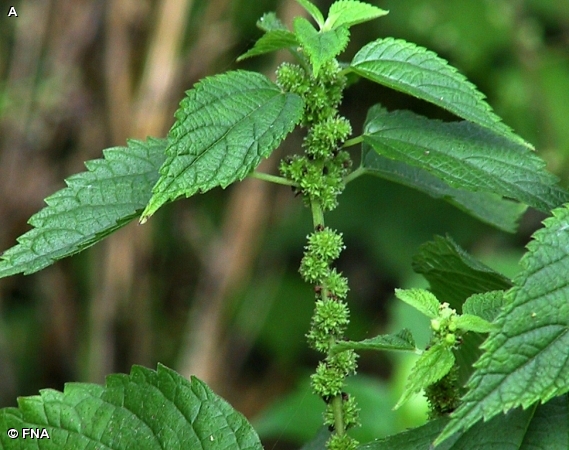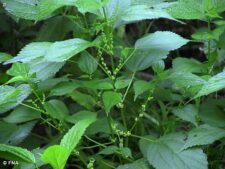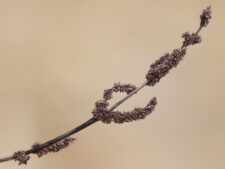
This native perennial grows up to 5 feet tall. The stems and leaves lack the stinging hairs of the other nettles. Toothed, oval-shaped leaves are on long stalks opposite on the stem (B). Male and female flowers arise from the leaf axils on separate spikes, sometimes on separate plants. The small greenish male flowers tend to be arranged in interrupted clusters like a string of beads (A) while female flowers are usually on continuous, erect spikes, often terminated by clusters of leaves (B).
Grows in moist woodlands, flowering from July through September. It is common in ravines and floodplain sites at Fontenelle Forest. It has not been documented at Neale Woods.
Opposite leaves and lack of stinging hairs separate False Nettle from Wood Nettle (Laportea canadensis). The erect flowering spikes separate it from Stinging Nettle (Urtica dioica) which has drooping and branched panicles of flowers. When not in flower the two may be hard to separate. For the more adventurous, the touch test may be used. False Nettle, unlike Stinging Nettle, has no stinging hairs.
The content of NatureSearch is provided by dedicated volunteer Naturalists of Fontenelle Forest who strive to provide the most accurate information available. Contributors of the images retain their copyrights. The point of contact for this page is: Roland Barth.

 Identification
Identification
